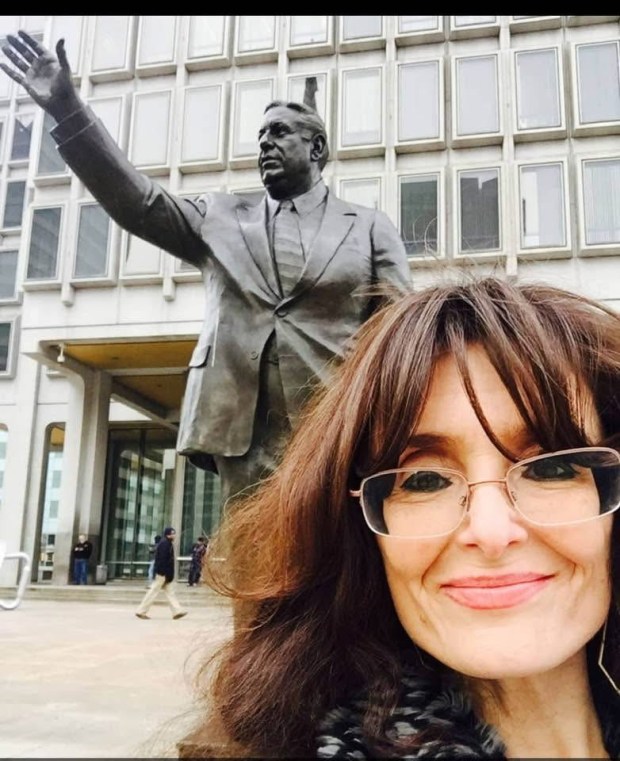“The line it is drawn/The curse it is castThe slow one now/Will later be fastAs the present now/Will later be pastThe order is rapidly fadin’/And the first one nowWill later be last/For the times they are a-changin’ ” — Bob Dylan
I’m not a huge Dylan aficionado, but I adore this song.
It is prophetic in ways that echo the great philosophers, and to be honest, the Minnesota native could have fit in quite well in the agora in Athens or at some podium in Rome, because he touched upon a fundamental principle of the human condition.
Everything changes, nothing is constant, not even death, for the soul is eternal, or taxes, thanks to the Big Beautiful Bill.
Last week, I wrote about the restoration of the Columbus Day holiday to the Philadelphia Municipal Calendar, canceled during the dark totalitarian moments of the Black Lives Matter era.
And now, this week, we are told that Frank Rizzo, the extremely beloved, equally despised, and overall iconic mayor of Philadelphia, will make his statuary return to our fair city.
That statue, well known to three decades of city dwellers as it greeted us from the Municipal Services Building, was kidnapped by a subsequent mayor who doesn’t deserve to be mentioned in the same breath as the Big Bambino, and hidden away under cover of darkness as BLM cut its vengeful, ahistorical swath across the architectural landscape.
 Christine with Frank Rizzo several years ago. She’s happy he’s coming back to the city. (COURTESY OF CHRISTINE FLOWERS)
Christine with Frank Rizzo several years ago. She’s happy he’s coming back to the city. (COURTESY OF CHRISTINE FLOWERS)
The times, they are indeed changing.
Frank will not be returned to his former place of prominence, because of an agreement between the owners of the statue and the city. That agreement seems to require private placement of the artwork, somewhere not easily visible or accessible to the public.
But that, also, may be “a changin’,” depending on future developments.
The main point is this: What was torn down, painted over, hidden away and erased five years ago at the height of thecultural witch hunt is coming back. Those who were slandered, lied about, shunned and maligned by people with questionable pedigrees are finding their way back to normalcy.
And Frank is coming back.
I know that this is annoying to a lot of the people who marched in the streets calling our former mayor a racist. That word, like “genocide” and “famine” has been misused over and over again, up to the present moment, by people who want to redesign this society according to their rigid standards of virtue and equity.
Fortunately, while their voices were loud and very influential for a time, other voices have been raised to counter their anti-intellectual heresies, including the idea that you must judge a flawed human being by the puritan standards of the 21st century and refuse to place them in the context of their own times.
We are, at least most of us, done with that sort of societal Etch A Sketch where people who no longer fit the prototype of the “fully pronouned ethically excellent non-judgmental but Trump hating” individual now raised up as the standard of good humanity is erased from view.
Now, it seems, as the times are changing, we are allowed to honor people who might have had vices that marred their profiles by instead focusing on their accomplishments while also mentioning their imperfections.
The witch hunt, perhaps, is finally coming to an end.
Of course, there are many people who do not see it this way at all. Simply for writing these words, I will be called a Nazi, a bigot, a rape apologist, a transphobe and all sorts of other things that fill my inbox and social media every time I open my mouth.
That is perfectly fine, because at 63, one of the things that are “a changin’ ” with me besides the color of my hair and the smoothtexture of my skin is my desire to give a blank about what people think about me. I no longer do.
Neither did Frank Rizzo. And that is why he was beloved by far more people than the sum of his enemies.
There was a genuine love of this city that permeated the man, and set him apart from many other politicians who engaged in their craft to enrich themselves, or to change the city.
Rizzo did not want to change the city.
He wanted to preserve what was good about it, wanted to keep the streets clean and safe, wanted to let the folks who worked and paid taxes and rode public transportation breathe more easily, and in that way, he was the antithesis of the Dylan song.
But the times were spinning around him as he lived, and most certainly after his death.
Those times changed with the winds, first turning him into a larger-than-life icon, then transforming him into a caricature of some Marvel villain, and finally showing him to be what he always was: a great Philadelphian.
The statue is coming back. I believe that a bit of sanity is trailing right behind.
Christine Flowers can be reached at cflowers1961@gmail.com.
